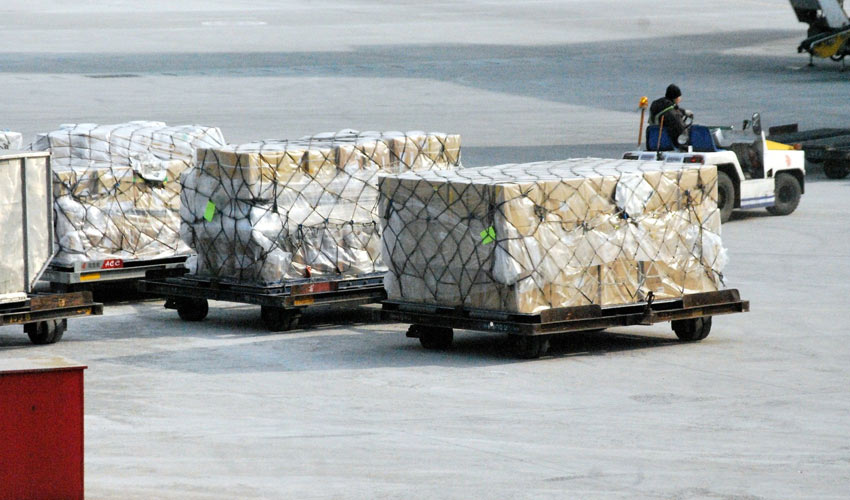The data which this blog article is based on corresponds to facts of April 27. Due to coronavirus outbreak current situation is changing rapidly.
A high value industry – air cargo is crucial for trade and community’s wealth. Compared to alternative shipping systems, this method is most effective for serving markets demanding reliability and speed for carrying goods. By covering hundreds of destinations, packages can get virtually anywhere. Thanks to very short lead times, perishable products can be delivered with low risk of getting spoiled. That makes air cargo the first choice for several merchants.
According to a recent report from the International Air Transport Association (IATA), the yearly delivery of goods by air over North America is around six trillion dollars’ worth. In a global perspective, this shipping alternative accounts for nearly 35 percent of world trade by value. Despite several economic disruptions caused by the coronavirus outbreak, airfreight is still decisive to ensure that vital supplies remain accessible. But how challenging is the current panorama?
Coronavirus turmoil spreads to the air cargo market
As the impact of Covid-19 began to unfold in late 2019, cargo carriers had to face several fluctuations in demand and capacity. So, estimated IATA a decrease in airfreight volume by nearly two percent year-over-year in February. Such outcome could be explained due to different factors, including the adoption of several national entry restrictions, drops in manufacturing production and increasing levels of economic instability.
In the same time frame, air cargo capacity fell fast five percent. Flight cancellations and an important reduction in passenger traffic drove this slump. At this point something is clear: The role that commercial airlines play in the cargo industry cannot be overlooked. Only in the United States, around 25 percent of all domestic airfreight is transported in the hold of passenger aircraft. While in Asia, this figure could be as high as 45 percent.

Urgent demand boosts cargo aircraft utilization
Today, as the virus continues spreading around the world, governments make massive efforts to ensure the availability of medical supplies and everyday essentials. Since there are capacity constraints on key markets, such as Europe-Asia, transpacific and the Middle East, airfreight carriers are developing some strategies to maximize hold utilization.
Some freighters in Asia are flying more hours a day in order to deliver as much protective medical equipment and coronavirus diagnostic tests kits as possible. However, they are finding they can only carry so much. To ease some of the capacity crunch, airlines have started to use jets that no longer transport passengers to load freight on their bellies. In some cases, even the main cabins are filled with shipments.
But shifting idled planes into air cargo business is not exempt from certain difficulties. Passenger airplanes can normally carry less than a half of the freight that dedicated freighters usually do. The last ones have larger capacity to transport over-sized shipments on their main deck. Also challenging may be to find goods to transport on their way back when trade is imbalanced.
While demand soars, and capacity tightens − how are air cargo fees being affected?
Airfreight rates going through roof
Since this pandemic is reshaping air cargo operations worldwide, rates continue increasing rapidly. With prices skyrocketing, the long-haul export capacity to key markets like North America and Europe is being impacted negatively.
The latest figures from the Transportation Air Cargo (TAC) Index give some interesting insights into this:
- Over the last week, the average air cargo shipping rate from Hong Kong to North America rose by six percent.
- Average prices from Shanghai to Europe reached fast eight dollars per kilogram – a new record since 2015.
- Air Cargo services from Chicago to Europe registered an increase of nearly three dollars per kilogram.
- On the westbound transatlantic, however, rates dropped 18.9 percent by the end of March.
How can operators deal with the impact of coronavirus on air cargo?
Efficiency in both operational and financial terms is the key in order to maintain air cargo supply lines stay open during this challenging period. The International Air Cargo Association (TIACA) in cooperation with other members of the Covid-19 Technical group has come up with concrete solutions aiming to support air cargo operations.
Some of the measures that governments may implement include to:
- Simplify processes regarding charter traffic rights for carrying medical-related products.
- Establish different mechanisms to provide financial support.
- Accelerate bureaucratic processes to secure slots.
- Evaluate temporarily relax regulations in order to facilitate the entry, departure and transit of airplanes engaged in relief flights.
- Support handling and maintenance agents in their daily activities.
A race against time – air cargo has proved to be a vital partner in fighting against this pandemic. From now on, all efforts should aim at improving its operational performance to guaranty that life-saving supplies will be delivered on time.




0 comments on “What Is the Impact of Coronavirus On Air Cargo?”